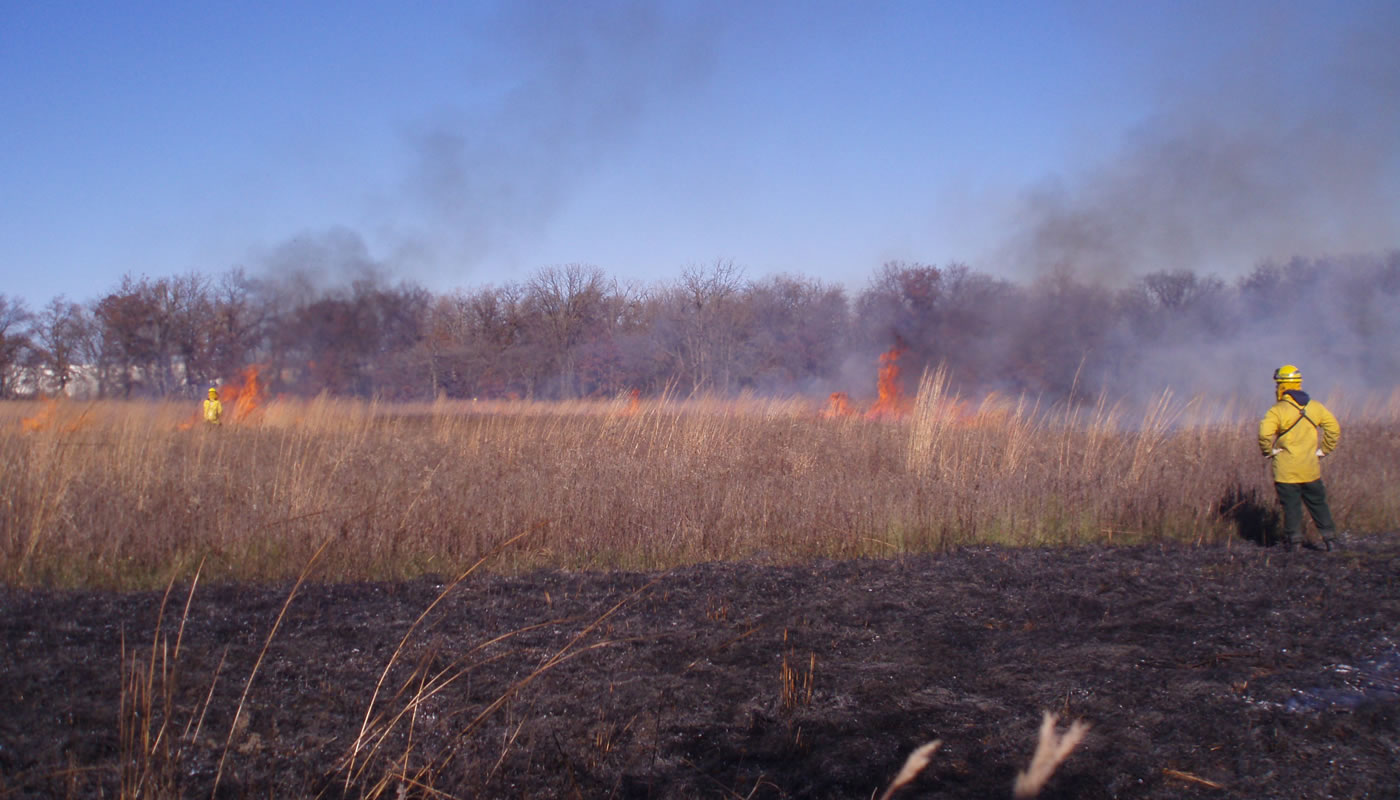Prescribed burning, done each spring and fall, is an important management tool for natural areas which mimics wildfires that our native prairies and woodlands have adapted to over millennia. Fire and heat suppress woody vegetation and invasive species, which has allowed vast acreages of both tall and short grass prairies and savannas in the Midwest to flourish.
Unburned natural areas can quickly become choked with invasive trees, shrubs and herbaceous plants including buckthorn and honeysuckle. A periodic fire regime limits these unwanted species while promoting more desirable woody species such as oaks and hickories, as well as numerous grasses and wildflowers.
As an additional benefit to prescribed burns, the black earth left behind after a fire warms more quickly in the spring, which gives native species a jumpstart in growth over unburned areas. Other benefits include accelerated nutrient cycling in the soil and decreased fuel loads that will reduce the likelihood of wildfire.
A typical burn season may only produce five to ten days of adequate weather. Soil moisture, wind speed, fuel loading, air temperature, and relative humidity are all considered when determining where and when to perform prescribed burns. Trained crews burn in preserves where conditions are right for safety, smoke management and the type of burn needed in a given habitat.
Learn more about prescribed burning and the restoration process on our What is Restoration? Page.

